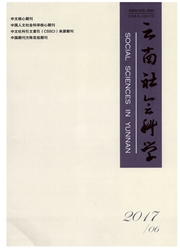

 中文摘要:
中文摘要:
以一种区域的、社会空间的整体视野对明清时期贵州东南部亮江地区历史进程的内在差异性和统一性加以认识,实地调研与文献解读相结合,着重分析区域内“苗侗汉”等不同人群间围绕着土地开发展开的博弈与互动情形。指出非汉族类整合进王朝视域的过程中,国家会根据地方实际情形预留一定的表达自我的空间,同时土著人群也会有意识的保留自我的主体性与独特性。
 英文摘要:
英文摘要:
Drawing on the view of regional and social spatial holism, this paper examines the inherent differences and unification regarding historical process of Liang river area of the southeast of Guizhou in the Ming and Qing dynasty. Through the field research and literature review, this paper focuses on analyzing the contested and interactive context regarding the land development among difference ethnic groups of the Miao, Dong, and Han. This paper concludes that, in the process of the non-Han ethnic groups integrated into the imperial dynasty, the state will set aside some space to express their identity according to local actual situation, while the ethnic group will consciously retain the self-subjectivity and the uniqueness.
 同期刊论文项目
同期刊论文项目
 同项目期刊论文
同项目期刊论文
 期刊信息
期刊信息
